
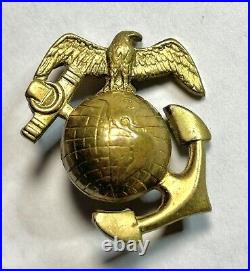
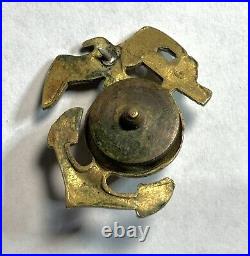


Not the issue variety. Late 1920’s to mid 1930’s droop wing dress collar device. Type worn by Marines in China. Larger than issue type by 1/8. This variation also has curved lines of latitude and longitude. Extremely difficult to find. Unmarked as to maker. Please pay upon receipt of invoice.


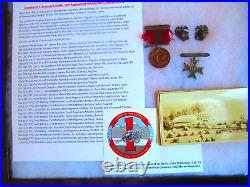
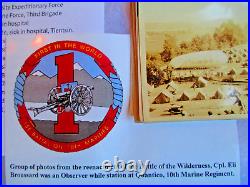
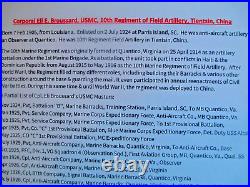
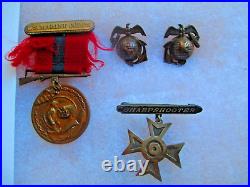

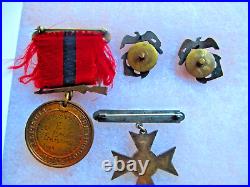
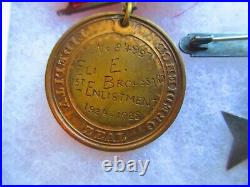

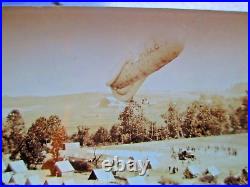

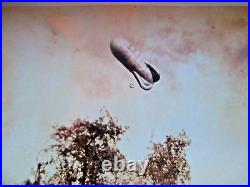
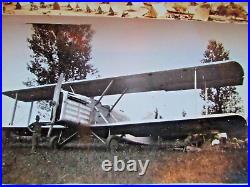
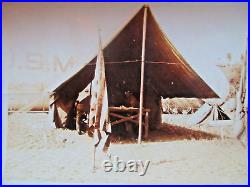
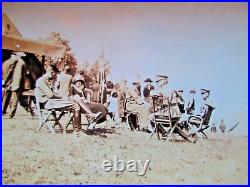
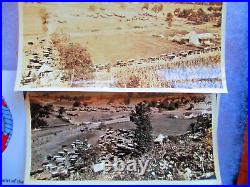

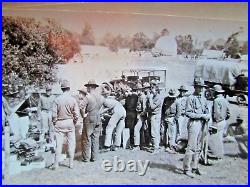

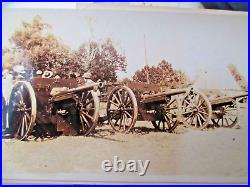
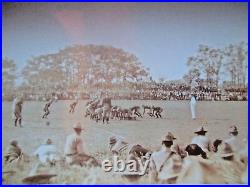

A nice USMC Good Conduct Medal group with service in China with the 10th Regiment of Artillery. While stationed at Quantico, he participated in the re-enactment of the Battle of Antietam as an Observer. Included in the group is his USMC Good Conduct Medal, frayed ribbon, engraved’No. There are 9 photos with a USMC observation balloon, on the ground & in the air, a Marine Corps biplane, Marine Corps cannons & a football game between Marines and VMI. Broussard was discharged as a PFC, but held a temporary warrant for Sergeant. While in China he was attached to the 1. A nice addition to your medal or USMC collection of a hard to find group from a Marine who served in Tientsin, China. Must be back in my hands 14 days from your receipt of the item. Description and photos speak for the item. Be sure to check out the photos for condition of the items. NOTE I was mistaken about which Civil War re-enactment they were involved in. Researching, it had to have been the re-enactment of Antietam. The Marines marched from Quantico and camped along the way to participate.


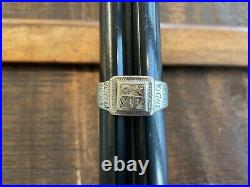
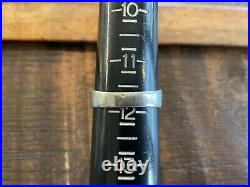
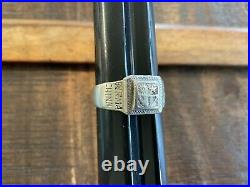
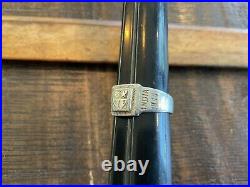
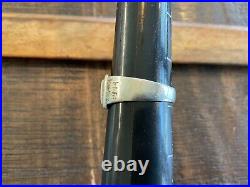



Unmarked but tested silver. A very nice example in a good size. Please see my other auctions for more items from this estate and other estate military items. Thank you and good luck! As required by your country’s laws, they are not charged by me and I have no responsibility toward them.


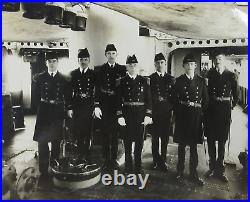
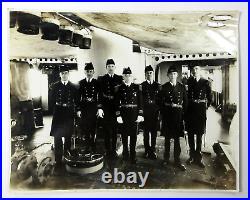
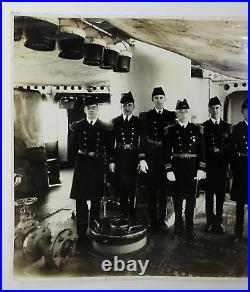
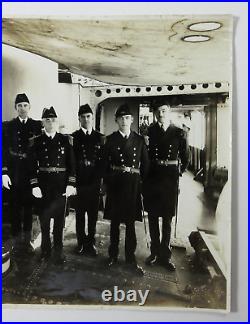

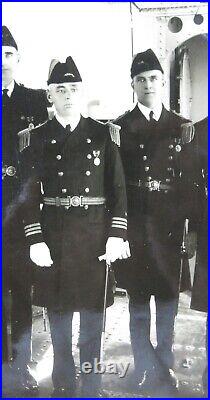
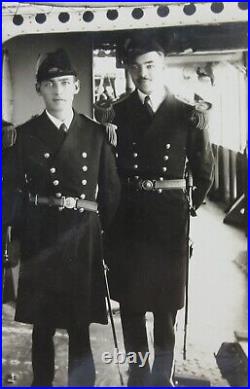
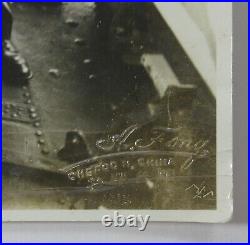


Estate sale find, vintage original US Navy China Service Destroyer USS Rizal Officers photo, circa 1920s. Photo is embossed in lower right corner with A. Fong Chefoo, North China. USS Rizal (DD–174) was a Wickes-class destroyer in the United States Navy following World War I. She was named for José Rizal, a Filipino patriot, and the National Hero of the Philippines. Joining the Pacific Fleet upon commissioning, Rizal cruised along the United States west coast into 1920 on exercises and training duty. Subsequently modified for service as a light minelayer, she was classified DM-14 on 17 July 1920. Rizal departed San Diego on 25 March 1920 for the Far East. With Filipinos constituting the majority of her crew, Rizal remained on the Asiatic Station for ten years. She spent long months anchored in Chinese ports during the spring, summer, and autumn months. Her most frequent ports of call were Shanghai, Chefoo, Chinwangtao, and Hong Kong. Rizal cruised eastward to Apra Harbor, Guam, during November 1928, and visited Yokohama, Japan, from 11 to 20 April 1929. Rizal spent each winter generally from November through March, anchored in Manila Bay. She was docked annually at Olongapo and upon resuming active service each spring operated in Philippine waters. Ordered home late in 1930, Rizal departed Manila on 11 December 1930 for Guam, Honolulu, and San Diego. She decommissioned on 20 August 1931 at San Diego and was towed northward to Mare Island on 31 August 1931 by the minesweeper USS Tern to be placed in reserve. PLEASE SEE DESCRIPTION AND PHOTOS FOR ADDITIONAL DETAILS – The item appears to be in overall Fair to Good Minus used condition, signs of wear, creases, fading, tears, chipping, sunning and age toning, soiling, stains, writing, no odors, please see images.


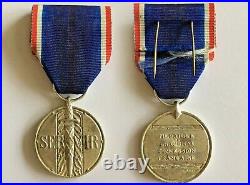
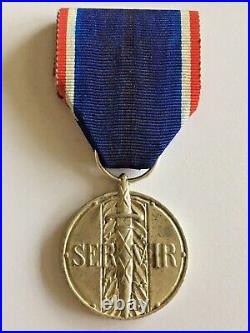
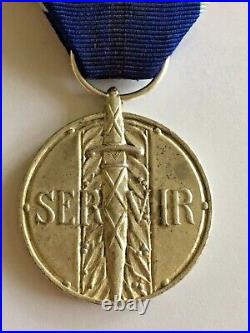
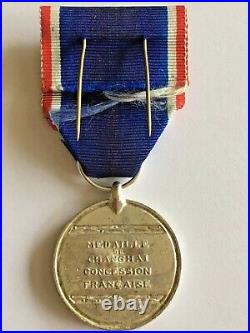
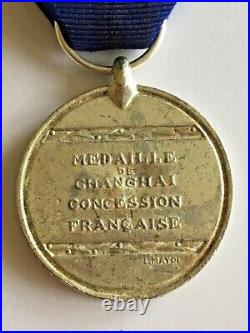

This is an original full size medal, not a reproduction. Changhai is french for Shanghai. Medal reads “Servir” and “Medaille de Changhai Concession Française” with L. The Medal was awarded for service during the Battle of Shanghai, 13 August to 26 November 1937 between Chinese and invading Japanese forces, especially in protecting members of the foreign communities present in the city. Check out my other listings now for more medals on sale. Dear valued customers, I regularly list Chinese antiques – coins, banknotes, medals, important documents, engravings, carvings, boxes, cases, frames, postcards, photos, stereoviews, fans, hats, ranks, badges, finials, embroideries, bonds, books, pocket watches, silver items etc etc. Track Page Views With. Auctiva’s FREE Counter.


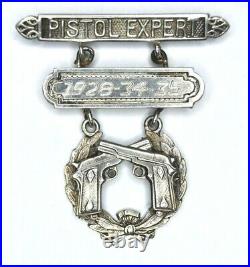

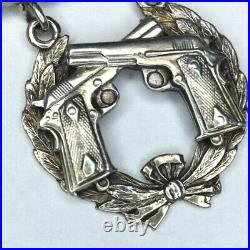

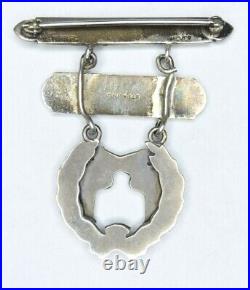
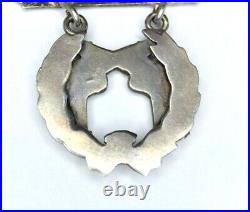
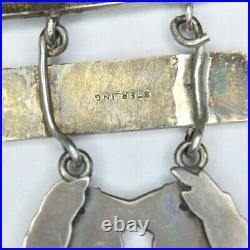
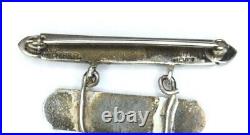
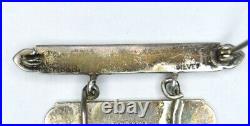
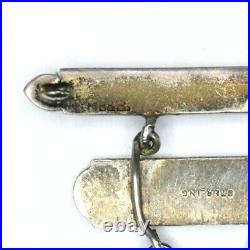

I’ve collected USMC shooting badges for decades and have never seen another BB&B second pattern (1915 to present) expert badge. I’ve owned several BB&B rifle expert badges, and several BB&B “colt” (pre 1915) pistol badges, but cannot even find record of another of these online.





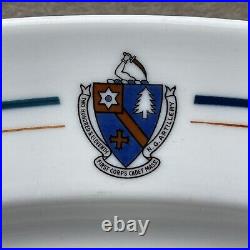
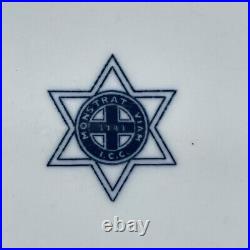

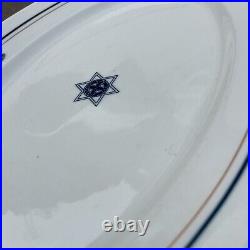


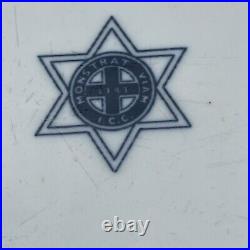


This vintage 1930s Massachusetts Army National Guard 211th Military Police Syracuse China serving platter is a unique collectible for militaria enthusiasts. Made in the United States, this original piece is perfect for display or serving. The platter features the emblem of the 211th Military Police on the edge, and the units motto Monstrat Viam – “It Points the Way” surrounded by a star in the middle, adding to its historical value. Whether you’re a collector or just appreciate the history of military police, this china platter is a must-have addition to any collection. It’s in great shape and has been well preserved over the years. Add it to your collection today! The platter measures approximately 15.25 inches long x 10.5 inches wide. It is marked OPCO Syracuse China 5-k on the bottom. OPCO stands for Onondaga Pottery Company, and the date code translates to May, 1930. Overall very good condition with strong graphics. Some utensil marks to the center of the platter that I will try to show in the pictures. The line on the back is a mold mark. The plate does have a little wobble to it when sitting on a flat surface. Additional background: The 211th Military Police Battalion (“First Corps of Cadets”[1]) is a unit of the Massachusetts Army National Guard. Its Headquarters and Headquarters Detachment is descended from the First Corps of Cadets, initially formed in 1741. It is one of several National Guard units with colonial roots. Its motto is Monstrat Viam – It Points the Way. While it has served in five wars, the sub-unit’s primary contribution to Massachusetts and to the United States was as an officer-producing institution for new regiments from the Revolutionary War through World War II.


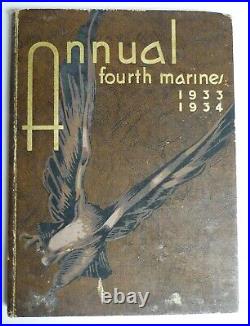
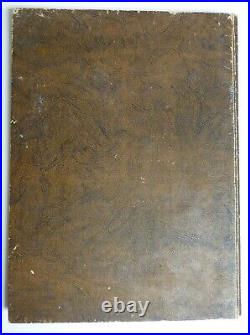
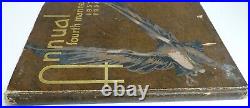
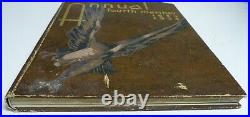


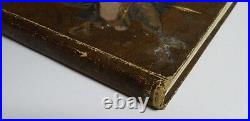






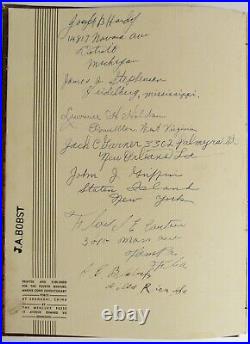
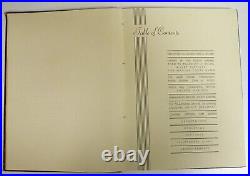
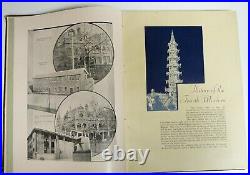
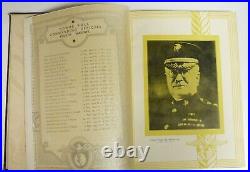
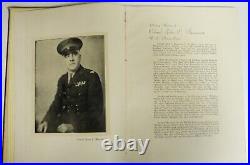
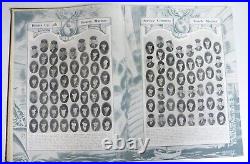
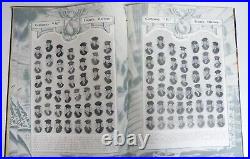
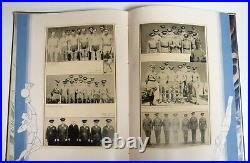

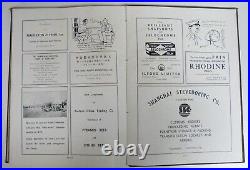


Inside of front cover is start to separate from the spine. Outside spine is heavily worn at top and bottom. Multiple signatures are seen on one of the first pages. The spine is a bit loose. Most pages are clean and are in very good condition. Please review all photos as they are considered to be part of the description. Please review the photos. Item is for sale to US buyyers only, no international sales.


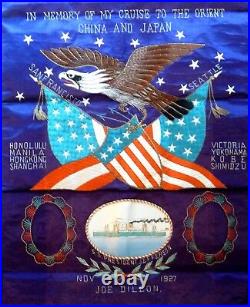
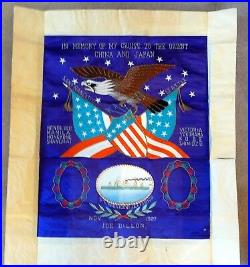
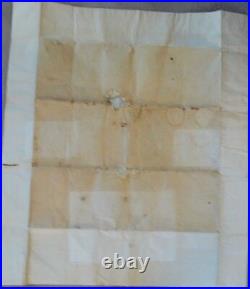

US NAVY SERVICEMAN’S TRAPUNTO BANNER commemorating CHINA and JAPAN VOYAGE, 1927. US Navy serviceman’s silk trapunto banner commemorating a voyage to China and Japan, November 1927. Commemorates the voyage of Joe Dillon on the S. President Jefferson to China and Japan and the Philippines: Seattle, San Francisco, Honolulu, Manila, Hong Kong, Shanghai, Victoria, Yokohama, Kobe and Shimidzu. 17×20 inches not including the protective paper edging (shown in second photo). Beautifully and intricately embroidered with eagle, flags and depiction of the S. These banners were very popular and sought after by servicemen as souvenirs at the time; this one obviously kept as a cherished memento. Most were produced in Japan, this one by m. Hasegawa and marked Embroiderer Coat of Arms and Portrait Painting on Silk, Yokohama, Japan. Excellent condition, protected by the paper backing and edge-covering. Paper backing is very good on the sides and fair on the back.



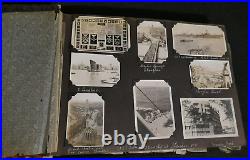
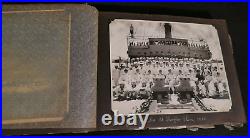
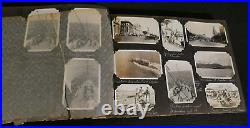
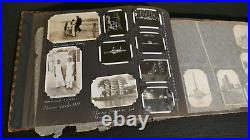
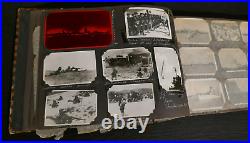
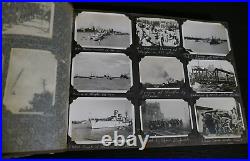
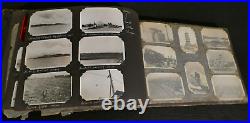
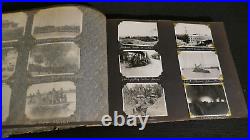
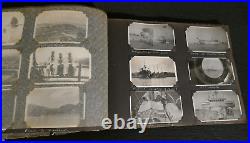
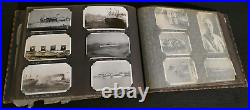


USS Tulsa PG-22 Gunboat 220 Photograph Album 10×14 Shanghai China Interwar, “Galloping Ghost of The South China Coast” 1930’s. USS Tulsa PG-22 Gunboat 220 Photograph Album 10×14 Shanghai China Interwar Era – Early WWII. As Photographed with some wear and aging as seen, one or two loose photos, a fantastic variety of period original photographs and absolutely one of the very best and almost completed noted photo albums of one of the US Navy’s Patrol Gunboats that served in China during the earliest days of WWII; Recent Estate Acquisition & Presented as Acquired, Exceptionally Rare (see USS Tulsa History below). Tulsa was laid down on 9 December 1919 at the Charleston Navy Yard; launched on 25 August 1922; sponsored by Miss Dorothy V. McBirney;[a] and commissioned there on 3 December 1923, Lieutenant Commander Robert M. Tulsa left Charleston Navy Yard on 19 January 1924, bound for the Caribbean to join the Special Service Squadron. She called at Key West, Florida, on 22 January, before proceeding to Baytown, Texas, where she took on fuel four days later. When civil strife broke out in Nicaragua in the late 1920s, details of marines and bluejackets from Tulsa landed to protect lives and preserve property. Tulsa supported operation in Nicaragua from August 1926 to December 1928. En route for the west coast late in 1928, Tulsa transited the Panama Canal as she prepared for duty in the Far East. She departed San Francisco, California, on 24 January 1929, called at Honolulu and Guam, and proceeded to Manila. Designated flagship of the South China Patrol on 1 April, Tulsa operated out of Hong Kong, British Crown Colony; and Guangzhou, China, for cruises up the Pearl River and along the south China coast. At Guangzhou in May 1929, she witnessed the bombing of Chinese naval vessels by airplanes of the opposing faction in a Chinese civil war flaring at the time. Relieved in June by Mindanao as flagship of the South China Patrol, she steamed up the coast to Shanghai, beginning a two-week deployment with the Yangtze Patrol in which she cruised as far upriver as Hankou. She continued under the direct operational control of CINCAF into the 1930s, being later reassigned to the South China Patrol and observing conditions along the south China coast during the period following the outbreak of the undeclared Sino-Japanese war in July 1937. As tensions increased in the Orient in 1940 and 1941, Admiral Thomas C. Hart, CINCAF, incrementally reduced the Asiatic Fleet’s presence in Chinese waters. Withdrawn to the Philippines in May 1941, Tulsa joined the Inshore Patrol, guarding the sea approaches to Manila Bay. On 10 December 1941, two days after the outbreak of war in the Philippines, a heavy Japanese air attack devastated Cavite, the base of the Asiatic Fleet, near Manila. Standing in from the Corregidor minefields, Tulsa anchored off the burning base as the last Japanese planes departed. She called away all of her boats and sent fire and rescue parties ashore to bring off what wounded could be rescued from the holocaust. At 19:00, she recalled all hands that were ashore; and, within hours, Tulsa, Asheville, Lark, and Whippoorwill retired toward Balikpapan, Borneo. After a brief stay at that port, she called at Makassar before receiving orders to proceed to Surabaya, Java, in the Netherlands East Indies, where she spent Christmas. Then, steaming independently, she cruised to Tjilatjap, on the south coast of Java, where her landing force began to receive training in jungle warfare. While engaged on convoy duty in late February, Tulsa received orders to proceed to a point 300 mi (260 nmi; 480 km) to the south of Java. En route, she learned that her mission included searching for survivors of the seaplane tender Langley, sunk on 26 February 1942. When she arrived at the scene, however, she found only traces of wreckage, but no survivors. Unbeknownst to Tulsa, Langley’s survivors had already been rescued by USS Whipple (DD-217) and Edsall. Whippoorwill already had begun rescue operations, yet needed medical facilities which Tulsa had on board. With Java being rapidly encircled by the onrushing Japanese, orders to retire were not long in coming. On 1 March 1942. Tulsa, Asheville, Lark, and Isabel crept out of Tjilatjap, bound for Australia. Tulsa and her two companions arrived in Australian waters shortly thereafter. For the seven months following her arrival in Fremantle, she engaged in routine patrols off the Australian coast before being refitted at Sydney in October 1942. Here, she received British ASDIC, degaussing equipment, Y-gun, and Oerlikon 20 mm anti-aircraft autocannons. Thus outfitted, she served once again as a convoy escort, occasionally towing targets as well. Tulsa with a PT boat at Milne Bay, February 1943. In the latter half of 1942, she was attached to Submarine Forces, Southwest Pacific, and operated independently out of Brisbane as a target for the submarines out of Fremantle. She then gave submariners practice in making approaches and battle surfacing. With the beginning of the Buna-Gona offensives in New Guinea, Tulsa escorted PT boats to take part in that campaign and operated between Milne Bay, New Guinea, and Cairns, Australia. When the PT boat base at Kana Kopa, on the southeastern shores of Milne Bay, was established in November 1942, Tulsa brought in much-needed equipment to aid in the operations being-conducted from that base. But five days before Christmas 1942, Tulsa grounded on an uncharted pinnacle and damaged her ASDIC gear, necessitating a return to yard facilities for repairs. Soon returning to the war zone, she resumed patrols off Milne Bay. In the short, sharp action which followed, Tulsa put up a spirited defense with her 3-inch and 20 mm guns antiaircraft battery, driving off the attackers with no damage to herself, while dodging 12 bombs. On one occasion while serving as a PT boat tender, Tulsa towed PT-109, later commanded by future U. After a major overhaul in December 1943, she resumed operations in the Milne Bay-Cape Cretin area. She departed the bay on 8 January 1944, with a fuel barge in tow, en route to Cape Cretin. Anderson, Commander, Task Unit 76.5.3 (TU 76.5.3). Under the control of Commander, Escorts and Mine-craft Squadrons, 7th Fleet, she served in the Finschafen-Buna area and participated in the Hollandia strike on 26 April and the Wakde landing on 17 May. She then continued in her role of escort vessel and patrol craft in the New Guinea-Australia area before proceeding to the Philippines in November 1944. Returning to the scene of her hurried departure nearly four years before, Tulsa continued operations with the 7th Fleet in the Philippines. On 18 December 1944, she was renamed Tacloban, after a town on the island of Leyte, where American forces had landed a scant two months earlier, freeing the name Tulsa to be used for the planned USS Tulsa (CA-129). Navy swept northward towards the Japanese home islands, and fierce fighting ensued on Okinawa and Iwo Jima, Tacloban performed the necessary tasks of convoy escort and local patrol vessel at fleet anchorages. On 26 August 1945, she was detached from duty with the Local Defense Force, Macajalar Bay, on the northwestern coast of Mindanao, and sent to Leyte. Arriving a week later, she received orders to accompany USCGC Ingham (WPG-35) and LCI-230 to Buckner Bay, Okinawa. On 7 September, en route to her destination, Tacloban was slowed by an overheated bearing, and her speed dropped to 3.1 kn (3.6 mph; 5.7 km/h). Left to proceed in company with LCI-230, Tacloban limped into Buckner Bay on 13 September. Task Force 74 (TF 74), to which she had been attached, sailed for Shanghai, China, two days later; but Tacloban, an “Old China Hand, ” could not make the trip and remained at Buckner Bay. Following voyage repairs, she continued across the Pacific and arrived at Pearl Harbor on 18 December 1945. Thirteen days later, she headed for the California coast and arrived at San Francisco, on 10 January 1946. Check back often – we search estates and sources across the world to bring a fine selection of militaria. Please review all photos for details regarding the condition of the item listed – further condition information will be included in the listing as is relevant, if you need additional photographs or have questions regarding the condition please do not hesitate to ask. I describe all items to the best of my ability – please do not hesitate to ask any and all questions prior to the close of the listing. Mistakes very rarely occur – however if one does please rest assured that it will be corrected. International Buyers are Welcome! This item is in the category “Collectibles\Militaria\WW II (1939-45)\Original Period Items\United States\Photographs”. The seller is “tortugaacquisitions” and is located in this country: US. This item can be shipped worldwide.
- Conflict: WW II (1939-45)
- Original/Reproduction: Original
- Theme: Militaria
- Region of Origin: United States
- Country/Region of Manufacture: China
- Modified Item: No




















































































































